(Is there a Standard Cognitive Model?)
~ The Study of Threes ~
http://threesology.org
Progressive Thinkers as of 1/28/2021
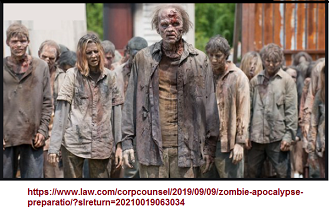 A Brief History of Zombies in Horror |
 Gothic studies: Werewolves and Wildness |
 History.com: Vampire History |
With respect to the idea of a "Standard Cognitive Model", we entertain interconnections of seeming disparate information that can take on various forms of symbology that inclines us towards analogy derived from metaphorized inferences. For example, the recurrent European created (supposedly originating) characters labeled as Zombies, Werewolves and Vampires may well be expressed extensions of an underlying basic cognitive profile. Just like Freud's application of the three-part Id- Ego- Superego, or the Lion- Tinman- Scarecrow and lions, tigers and bears phrase-based trios in the story entitled "Wizard of Oz", and multiple other tripartite themes such as for example that used by Georges Dumezil (whom, by the way of some accounts, was somewhat dismissive of the "outcast" (untouchables/dalits) class of India which presented him with a fourth item that contrasted with his orientation towards a three-part (Trifunctional) social scheme of Priestly class, Warrior class and Commoners/Workers [Artisan] class; but that later and the present readership of Dumezil's idea should have realized that there exists a 3-to-1 ratio cognitive pattern which plays out by way of multiple forms in human cognition— if one will only look more broadly into multiple other subject areas which the human mind ventures into).
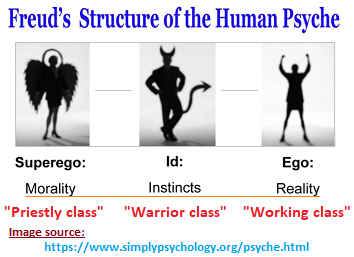
|
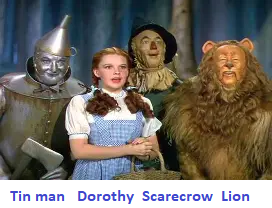 |
|
|
|
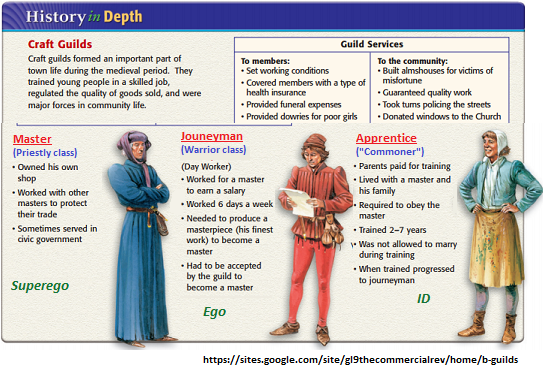 |
|
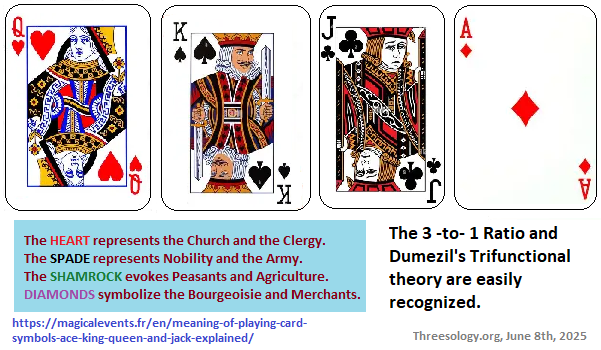
|
|
Yet, not all three-part ensembles of characters (or items) lend themselves to an interactive "chain of being" in the sense that they express what appears to be a referenced spectrum of gradation which can transgress into multiple fields of application. Like the interplay of the numbers 1-2-3 which exhibit a transition between each other despite their different shapes... which would not reveal a quantitative increase if a person was unfamiliar with their symbology. The understanding of a given symbology (whether in words, colors, symbols, sounds, etc...) helps one to realize the presence of a transition, whether or not the examples are placed into an order which assists a researcher in deciphering the transition. For example, if you were unfamiliar with the sequence A-B-C, then an order of these discovered as B-A-C, might well be misinterpreted as to their sequencing... if the notion of sequencing came to mind as a consideration. Likewise, it may seem a bit weird for someone to say the sequence of "Lion- Tinman- Scarecrow" as "Scarecrow- Tinman- Lion", even though the latter sequence is how the characters arrive on scene as the story progresses. (At this point let me assert to the reader for a need to begin analogously referencing the three characterizations displayed as Zombies- Werewolves- Vampires.)
Whereas we may use the Dumezilian Tripartite ideology for a given context of research and find other examples of three characters which might well be included, it is a theme that may be seen as inadequate for multiple other examples. Hence, instead of being impulsively dismissive, let us say that it may be one of several sub-categories in a larger theme no one has yet recognized because the idea of a "threes" cognitive perspective is far removed from the typical orientations of academically trained trails to explore. Problems arise when we assert the usage of a strict and narrow definition on some occasions and on others are definitions appear to be so flexible as to suggest the presence of an artistic compilation of "anything" goes... or a one-stop shopping experience to gratify any impulse or inclination. Hence, a dichotomy of inclusivity/exclusivity is drawn up and adopted according to those who agree with a given orientation, and who may come to assert their views by way of education institutions, laws and instigated cultural observances.
If one permits themselves to investigate suppositions and imaginative inferences, than any pattern-of-three can be (at least momentarily) studied in an effort to create illustrative intellectual portrayals of alliances that might not otherwise being considered. For example, does the three large particles (Neutrons- Protons- Electrons) exhibit qualities which are reminiscent in the Dumezilian theater of considerations, or perhaps the other way around? In other words, do the Trifunctional three of Dumezil (crudely?) exhibit the particles? And what of the triplet code of DNA? Granted these are not typical excursions of even Metaphysical interests commonly discussed today, but in the realm of "threes" research one is permitted the latitude to explore so long as they are not so entertained that they lose sight of attempting to create some semblematic (symbolism)/emblematic (Linguistic) approximation of coherent understanding.
Likewise, one might linguistically (and sequentially) say coat, shirt, pants, shoes and socks, and think it weird for someone to say the reverse order, even if the order is how one may dress. Another instance, mentioned later on, is the phrase "Knife- Fork- Spoon" which is correct when thinking in terms of a numerically related reference, but may not be correct when they are spoken of... if at all; such as when all of them are mentioned as a customary expression when speaking of cutlery. (As a side note, it is interesting that we collectively reference the three as "cutlery" and not "forkery" or "spoonery" or knifery, particulary when we note that it is only the knife customarily assoicated with the word "cut"... even if a fork or spoon is used in this mechanical sense. This is not to say that there are those who customarily mention only one or two of the items, but when addressing all three, the sequence may be identified as an ordered repetition that can be related to an underlying cognitive impulse and not simply some cultural of familial echo that is mimicked, like a group of people saying "hello" when someone else says this to hear themselves echo within a given echo chamber. In other words, the sequence of expression may not be the result of an external influence, but an internal one related to an unrecognized cognitive imperative that can be associated with enumeration. However, such a notion begs the question of whether the brain is an active counting mechanism, even if a person is not aware of it engaging in such an activity. Like an animal able to recognize a certain quantity, giving humans the impression that so-called dumb animals have a rudimentary counting facility. Yet, if the brain is unconsciously counting (as opposed to those people who actively count different items such as a child skipping to every third stone in a patchwork of tiles, stones, bricks fence staves or some imagined recurrence).
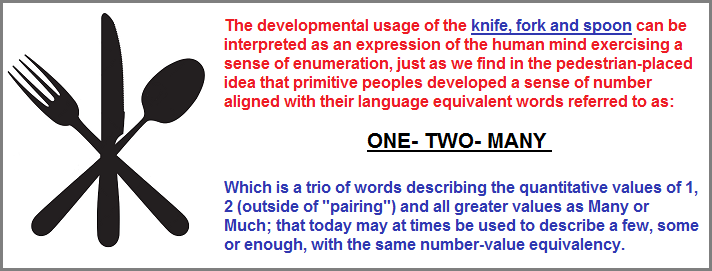 |
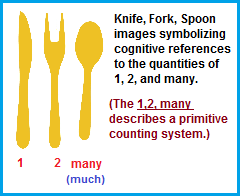 |
Let me at this point express a caveat: Just because one or more authority figures repeat a given sequence in their comments, books and teaching materials, does not mean they have discovered the correct order by which a transition can be deduced. Indeed, arrangements can be used incorrectly, even when their order is enforced by tradition, common practice, policy, collective authoritative agreement or law. Linguistic usage may conceal underlying cognitive patterns related to numerical indexing, and should be scrutinized... just as one does when deciphering typical behavior patterns such as which thumb is overlapped when one's fingers are inter-twined. (Hand-clasping: Myth and Reality). What feels natural and comfortable for one may not be for another, and both may be incorrect when attempting to decipher an underlying cognitive alignment assigned to enumeration in an effort to identify basic patterns of sequentially related to the phylogeny of a species and not any formula of ontogeny. Just because the entire human race has been similarly subjected to an environmentally induced predilection to grow and perform in a routinely repeated pattern, does not mean this is to be interpreted a Natural law existing outside the confines of Earth, the solar system or the galaxy. In other words, the word "probability" should not be used to refer to a limitation of potential or inevitability without recourse.
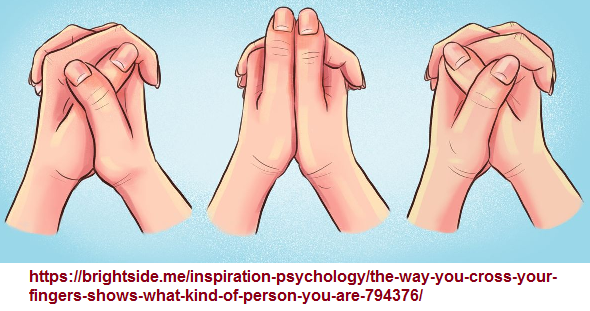
How do you cross your fingers?
Most often we find efforts to define a standard cognitive model by inserting the term "generally speaking", in order to outline what are often referred to as milestones of development such as from infancy to childhood, childhood to teenage years, then to young adulthood, middle age and the senior citizen. Many researchers will instead dive into a particular aspect of one or more of these divisions to identify what they describe as particularities, with and without the presence of anomalies that may describe a single individual or group of similarly labeled individuals. Such is the case whereby ranges of occurrence are established in order to include shorter and longer variations of themes, which may or may not highlight a given delayed, stopped, or even early development. Yet, such efforts describe an Ontogeny. That is, in reference to an individual or group of individuals deemed to represent the characteristics of similarity due to age, occupation, gender, culture, diet, education, etc... While some researchers may want to consider that such criteria as they denote may well be a generalized standard of development which has occurred through the centuries, requirements for early self-sufficiency often preclude the necessity for an individual and group of similar individuals to adopt behaviors of thinking patterns suggesting those equated with a later age. In other words, what we today may describe as a normal and natural sequence and time-line of development, may not be the case for those of the past or future are subjected to different pressures and stresses. If an environment requires young to mature fast for survival, adaptation may well ensue. Likewise will there be an increased range (delay) for developing self-sufficiency (to fend for oneself), if an individual's circumstances not only allows but insists on a later development so as to delay their departure or set them up for troubled events due to lack of survival preparation.
For example, girls reaching puberty today may well have been marked for early motherhood in distant past ages, because the life cycles were shorter due to a lack of adequate health care, and other exercises of early death scenarios such as attacks from other groups. Hence, we might well consider that the thinking behaviors of today are elongated due to an increased life span that people of today enjoy, but those in the past did not conceive up... and may have thought of life and death in compressed modes of realization related to the ideals of a given era. Given eras and given peoples provide us with images representing the currency of obsession with the human body that was being fostered. For example, rites of passage from adolescence to adulthood required skills and attitudes similar to the expectation of adults, be it hunting or fishing skills, hut building, child rearing, cohabitation with sexuality as a prominent orientation, as well as being able to make clothes, fire, and the needed implements of day-to-day survival. Longer durations of life span exerted a requirement to develop a cognitive style representative of such interests, and often found in religious ritual. In short, symbols and symbolism came to the fore to represent cognitive inclinations tied to emotions; both of which may have been subjected to a cultural exercise of constraint... such as the hardening of cognitive-styled emotions for warfare and the strengthening of those cognitive behaviors suitable for fostering animal and plant husbandry, as well as nurturance for one's own young. One need not elaborate or go into too great a detail since very many volumes of culturally-based psychologically-related domains have been written by Historians, Psychologists, Anthropologists, Sociologists, etc... However, they too primarily speak in terms of an Ontogeny of development... even if the Ontogeny is of a civilization or Empire such as the Roman and Chinese. While some researches do attempt to create a type of Phylogeny of all the Ontogenies, this too is an Ontogeny.
Though Anthropologists, biologists and others have attempted to create a Phylogeny of a given subjects totality of information, such as the story of hominid evolution or the evolution of life or the evolution of atomic particles, etc..., all the ideas being offered are not being put into its own phylogeny to present us with a standard cognitive model which references the transitions of basic thought from which predictions of future mental behavior might be derived. In short, we do know how to accurately interpret the many symbols humanity is using, including language and mathematics. While there are very many Linguists and Mathematicians involved with the development of specialized Ontogenies within these fields of interest, all fields of interest are not being surveyed to grapple with an attempted appreciation of what exactly are humans trying to convey with all their myriad types of symbolism? While some might argue it is all for the purpose of survival, others would suggest that survival... as well as life is but a symbol expressing a larger imperative... be it with or without a religious intonation or preference. Life could thus be termed a symbol being expressed by the Universe or some small portion of the Universe... just as we might create a doodle on a piece of paper or some mark on the margin of a book. To simply be dismissive of the effort to try and decipher the many types of symbolism in use by claiming "only a god knows", is little more than an excuse in order to engage in simpler tasks and perhaps want to suggest the task is one like searching for the Holy Grail (chalice used by Jesus), or a fool's errand like the exploits of Don Quixote.
While numbers are a symbol like so many other symbols that may be exhibited as mere twitches and discarded as a commonality, we do not look for recurring patterns as an expression of a sequential scenario that may take place as an exhibition of repetition portrayed in alternative forms in different arrangements. Though we customarily sequence numbers in a 1-2-3... fashion, this usage may not be accurate in that this is the best we can at presently do because of self- imposed constraints caused by the different social orientations of concern today. Different symbols in a different order may well be more accurate in describing what appears to be a developmental trend of cognitive behavior, despite truncations, deletions, substitutions, and otherwise seemingly incongruent mental "flailings" which might appear to be an indication of something out of context or a person's mental illness, only because we are unable to separate cognitive ontogenetic expressions from phylogenetic ones.

...That is, a person's individual mental expressions occurring in different symbolic models as opposed to the symbolic models being used to describe an overall phylogenetic cognitive development... keeping in mind that language, thinking, and culture might well be prolonged fads of occurrence, though they are labeled and described today has having some unequaled significance. Let us not forget that there was a time when language, mathematics and what we call culture, did not exist, and their non-existence described a different type of existence which some readers might refer to as a "proto-existence"; before, during and perhaps shortly after a transition into another existence occurred. Crudely, one might offer the transition from one hominid model to a presumed "advanced" one, which is thought to have preceded the eventual development of "hominoids" today. Likewise, Language, thinking and culture as they are used today, may well be "prolonged fads" or styles of behavior that humanity passes through but has not yet learned how to achieve a rite of passage into a future cognitive design of itself. We are at present like a chimpanzee that is obsessed with fishing out an insect by using a stick to probe a hole... which can be used to describe current cognitive behavior that many do not want to leave behind and venture forth from because they are fearful of the unknown... particularly if they have to question their adopted truths, much less venture into behaviors of thinking whereby new associations are developed as a tool to see further then they have ever before.
- Clever chimps boost their termite catch
- Wild chimps upgrade termite-fishing tool
- Tool-Set for Termite-Fishing by Chimpanzees in the Ndoki Forest, Congo
- Wikipedia: Tool use by animals
- Britannica: Chimpanzee Intelligence
We need a better tool to unravel and categorize the many different forms of symbolism in order to decipher the difference between an ontogenetic cognitive display of a person and a phylogenetic one involving the species... though the human species may itself be a fad... a style of behavior that life must pass through like a "milestone" of development recorded for developmental stages of an individual from the womb to the crave. If current humanity is just a fad, how do we proceed to the next phase of development... particularly if it requires removing ourselves... or at least our genetics, into a viable environment outside the Earth, the solar system and galaxy?
Chronologically speaking, the first letter of each of the three characters almost creates an aligned sequence: Z-W-V. In other words, if Zombies were viewed as xombies, we would have V-W-X, albeit in a different order. Yet, when we look at how so few words (n the English language) begin with the letter "X" and that when we do use it some words are commonly produced with a "Z" sound, it is necessary to rethink our initial observation. In our own mixed up way of having an aversion to the usage of "X" words (as denoted by a small listing in the dictionary), we have adopted an alternative close-by or in the near vicinity substitute, which is the letter Z... hence, "Zombie". If we write the word "Xenophobic" we pronounce it "Z"enophobic... such that "Zombie" could be written "Xombie"... thus denoting a specific type of xenophobe. Yet because of our seemingly aversion to using the letter "X" (as opposed to using other letters with great frequency), we instead use the letter which it commonly describes... that is, the letter "Z". As if to use the letter "X" has been somehow adopted as a widespread creature to stay linguistically clear of because their is some attached unspoken taboo; whereby a nearby relation is an adequate substitute— cognitively speaking on a basic level. Interestingly, all three make up references to the end of the English alphabet and not some central or beginning array. (The names do not start with A,B,C or L,M,N). Hmmm, I wonder if the usage of letters from the end of the alphabet to describe creatures which suggest the death of humans... if not all of humanity as we know it, is an unconscious presentation of an inclination to think in terms of an (apocalyptic) "End time"? If the letters A,B,C can be interpreted to symbolically represent a cognitive inclination to reference the beginning of life, of history, etc..., does a usage of the last letters reference a cognitive impulse to think in terms of the end of life... of history? Our we describing an underlying cognitive orientation but are not acknowledging such a behavioral inclination? Are only English speaking peoples inclined towards an orientation, or do all cultures share in this supposed unconsciously derived imperative with their own linguistic patterning linked to an unrealized cognitive activity "working in the background"?
Though some readers may be humored by the previous suggestion and dismiss it as an "English" language orientation, because their own language does not use the same letters when speaking of the three characters... even though they too might well on occasion use the English language words to label them; the English language may be able to afford us, in some respects, a closer look to an underlying cognitive strain of thinking, if the word "strain" is used in the sense of "vein", like a vein of a particular ore, or a biological mutation whose viability exceeds a former generation of expression. In other words, the three characters (Zombies- Werewolves- Vampires) as denoted by English language words may provide us with a hint, a "slip of the tongue" (so-to-speak in reference to the human mind), of an underlying trend of mental processing which is sensitive to environmental degradations and is using these three characters as a means of conveying impressions of subtlety that so-called rational thought dismisses as a superstition or fairytale. Such that, though the characters in their forms displayed in current tales are fanciful creations, the underlying portrayal presents us with an image of an impression which the brain of humans can perceive, but does not have an adequate language in which to describe such impressions, whereby it resorts to the convenience of those symbols readily available and lend a measure of communication with others. In other words, their shapes are crude symbols, but nonetheless all three point to a similarity of effect for humanity resulting in a demise.
Let us not forget it is said that underlying all languages are a handful of basic and recurring themes which no language usage can conceal. For example, we have the sentence ending strategies of the period, question mark and exclamation point. Whereas all languages need not use all of them in the same frequency nor for that matter all three; we do not see more than three. We might see compounds of the three, and inverted representations of the symbols (such as in the case of the exclamation point in Spanish), or different symbols representing the same three intentions, but we do not see a large assortment. The list is conserved. Likewise, underlying all languages is said to be a trimodal structure consisting of a Subject- Object- Verb (SOV) in one order or another, but we can recognize a limited usage for the possible arrangements and that their are arrangements which are more often used than others. (Greenberg [in Universals of Language] noted that of the six possible orders, only three are commonly found: SOV, SVO, and VSO.): The Order and Evolution of Word Order
In linguistics, word order typology is the study of the order of the syntactic constituents of a language, and how different languages employ different orders. Correlations between orders found in different syntactic sub-domains are also of interest. The primary word orders that are of interest are:
- the constituent order of a clause, namely the relative order of subject, object, and verb
- the order of modifiers (adjectives, numerals, demonstratives, possessives, and adjuncts) in a noun phrase
- the order of adverbials
Wikipedia: word order
I am not talking about words, per sey, I am talking about those basic patterns of mental activity beneath words, that one may refer to as a deep structure of scaffolding, though the scaffolding itself needs a firm ground unless the scaffolding is of a type that has great flexibility and an internalized mechanism which "automatically" adjusts itself, as opposed to the idea of a ladder which has to be manually altered to fit different terrains, and is sometimes referred to as a multi-position ladder offering versatility. Also, I am not speaking in reference to any inclinations presenting a deep structure of language, because language itself is noted as crude symbols of mental activity, or else there would be no need for so many words... unless the mind is truly complex or is otherwise striving to express itself and resorts to language as a vehicle of metaphor trying to better express itself. While some readers may offer the idea of vowels and consonants as being basic language forms, with respect to the brain, language is a crude expression amongst several other crude models to be used such as speech, mathematics, music, etc... In other words, let us not jump to the conclusion that language is a basic feature of the brain, just because most people are enabled to use it.
If the brain's capacity for the words form of language is muted, one might conclude, after some observation, that compensations take place whereby the math or art or music form of "language" is increased... though some are inclined to say that the word form of language is a necessity for the advanced forms of mathematics to be articulated in a sort of auditory theme of rehearsal, if not confidence building to project (in writing symbols of math, music or worded forms of) cognitive activity. Thus, the symbols are crude representations of mental activity that has come to be accepted and designated with varying qualities of desirability, such as when claiming one is good at a subject, great at a subject, or even genius... though we have not collectively tried to surpass the word "genius" by offering another word... even while some resort to an attempt to increase the value of the word by assigning it with some god-like, god-given attenuation when it is described. Similarly, when we get to the word "large" and use the letter "X" to exceed it instead of creating another word to exceed this designation: (X-large, XX-large, XXX-large)... because the word "large" appears to be a linguistic representation of a cognitive limit related to the old theme of primitive enumeration. In other words, the word "great" is like the word "many" in the three-patterned primitive counting sequence of 1-2-many. Likewise, we can see that we resort to a form of enumeration after the word "large" in an effort to describe points beyond it, though we again reach a three-patterned cognitive limit by using X's which reference quantity.
Just like the assumption we think that all languages arose from a single "protolanguage", likewise is it considered that thoughts and their arrangements (which may or may not mimic the short list of word-order arrangements), also have a "proto-thought" and "proto-consciousness" place of birth... their own primordial soup so-to-speak, even while some disagree and prefer to offer the idea of chemiosmosis as being responsible for the origin of life... though both are valuable metaphors in the present discussion where metaphor is used liberally and not literally. While some may want to dive into the consideration of neuron activity and the birthplace of "proto-neuron" beginnings, the point to be made is that the basic activities from which current forms of thought exercises (art, music, language, mathematics, etc,) take place as supposed "emergent" properties. Such properties might well be viewed as slang or jargonized vernaculars derived in different environments used egotistically to promote self-indulgences of verbal activity assigned to topics arranged hierarchically to produce multiple types of aristocracy and varying gradations of social stratification fitting in with one's adopted notions of lower, middle, and upper class behavior. (If not one's form of language, than ideas are used as gauges to accept or disqualify someone's entry into a given scientific, religious, political, etc., social order, if not some point in a given social order stratification.)
Apocalyptically thinking, if a given event occurs in sequences and not as a one-time single episode, then reality will exhibit moments of nightmarish levels interspersed with seemingly calm and quiet, as is the case when we take a review of history. Accordingly, because different peoples live under the experiences of varying types and degrees of hardship, improvisation, impoverisation, wealth, distress, loss, gain, etc., one person's nightmare may appear rather routine by another person's learned standards. Yet, if their is an up-shift, an increase in the variability, an overlap may likewise occur and be presented as a collective experience such as a pandemic. In other words, analogously, a degree of shared level of wealth and shared level of impoverishment will occur, where "wealth" and "impoverishment" are metaphorical labels describing wave patterns which come to periodically overlap. Hence, in such a scenario of occurrences, the world is heading towards an Apocalyptic wave pattern to be shared by all, because resources, due to population growth and disintegration of the Sun's energy, Moon's receding presence and Earth's slowing rotation, will produce an overall environment which creates peaks and valleys whose momentum will flatten out; no longer producing extremes of high and low from which to descend or ascend out of. Reality is heading towards a globally shared nightmare that (1) many will try to deny as occurring and try to rationalize away, (2) others will develop defeatist themes of activity, while (3) still others will accept the conditions as they are unfolding and come to exploit them so as to achieve some personalized relative equilibrium in order that they can enjoy whatever fruits are available for as long as they last... even if it means sacrificing their own so that they may live the best they can for as long as resources prevail. Such a situation is sometimes portrayed as common behavioral practices to be encountered if he public is faced with a catastrophic inevitability. Differing sensitivities and sensibilities account for behavioral variations.
As humanity increases an expressed realization of a to-be shared nightmare, we can see efforts of trying to remove ourselves from current standards of living which are not termed as a nightmare by some in their personal situations, but nonetheless may direct them to indulge in efforts to periodically remove themselves from that variously labeled as stress, bad situation, trouble, problem... but not labeled a "nightmare", by such methods as some form of intoxication or over-indulgence whereby they get "lost" (or find a "zone" in which to inhabit as a place, a time) in a moment which can be labeled as a sanctuary... as a respite, vacation, retreat, outing, etc... Each of us develop momentary or prolonged variations of personal retreats, personalized sanctuaries that may or may not be shared by one or more others having a similarly disposed orientation of assessment. Indeed, Institutions and groups of different types are shared retreats thought to afford at least some respite from the nightmares of improvisation, illiteracy, disease and social non-existence or relative obscurity where oneself is not widely known as a celebrity or at least widely acknowledged personally. For some, their attempts to create momentary and perhaps periodic retreats from one or another situation thought to be undesirable, sometimes develop into a nightmare such as in the case with drug, tobacco, sex, crime, or alcohol addiction; to which any indulgence can lead one into a cul-de-sac from which they have difficulty removing themselves from and finding a more relatively stable and viable life and worldview in which to prosper to the degree of maintaining some semblance of rationality that is not detrimental to them physically and/or mentally and/or emotionally. While many readers already understand this, it is of need for me to describe my own realization of such observations so that you will understand that I too understand.
Nonetheless, the widespread usage of socially acceptable behavioral activities to create personalized indulgences of distracting oneself... if not others from a perceived lesser state of desirability to a state of more welcomed profitability; which the creator of the indulgence may use to exploit the energies and other resources (such as specifically defined money or sex or intelligence or labor, etc.,) so that their indulged-in fantasy can be more fully realized. Indeed, every religion, business, and government philosophy is a made-up indulgence-created-fantasy that others share in as if such a view affords them with a means to rescue themselves out of less than desirable circumstances. Realistically, one is forced to do what Romans do while they are in Rome... as the old saying is described in a different model of expression. In other words, one learns to "walk the walk and talk the talk" of a given environmental setting of sociability, but that this is by no means a guarantee that you will be permitted to join in an inner circle to reap the full benefits of the overall indulged-in fantasy being played out like so many other games. (Sometimes you need a professional title, or tattoo, or piece of clothing, etc., at other times it is better to keep such a denotation concealed.) You may be able to participate, but only in a reduced or reserve capacity... such as being given a title equivalent to the idea of an "elite guard" or nobleman which affords you with certain entitlements, but you are never permitted entrance into the dominant rule players association, be it a gang, a club, a corporation, a religion, a political system, a team, a community, a country, a neighborhood, or whatever collectivity exists in your particular circumstances. In any respect, we shall encounter a future time when all of humanity shares in the same nightmare and have not but a single indulgence to abide by for all concerned, such as collaborating together to create a means by which all of humanity are afforded a means to get off the planet, out of the solar system, and away from this galaxy in order that the species might continue to survive... in some manner or another. Otherwise, occasions of death as we have already paid witness to in the sense of war, corporate greed causing fatalities, religious fanaticism creating fatalism to go hand in hand with manufactured idealisms of hope and promise, etc...
With respect to intensity of occurrence, one might catalog instances under headings such as smaller to larger, small but widespread, then larger and widespread, etc., as a generalized way of expressing that which will ensue because people will feel... will think, there is no other escape... no out... on the where and when and to what degree; since ultimately escaping from Earth's conditions that increase the perpetrations of a globally shared nightmare is going to be controlled by those in authority whose agendas are articulated with claims of being focused on saving as many as they can, but in actuality they are foremost interested in saving those that they want to... and simply want to use the resources and energies of the majority to ensure that a few survive... and those few are those they want to choose... their family, their friends, their colleagues, and those that are best able to assist in maintaining their role as an authoritative figure... such as a police and/or military force, and those with skills which will increase their chances of continuing in viability. All present institutions, be it business, government and religion have agendas which will force their respective authority figures to tighten the circle of those they will save, as more and more resources are depleted and the environmental conditions are deteriorated. Ways will be sought to make the masses more compliant and self-sacrificing, under the guises of laws, policies, beliefs, "market forces", goods availability and surplus, etc... Including the usage of weaponized biological and chemical enforcements... with nuclear armaments an option as well. No matter how smart you think you are, no matter how valuable you think your abilities are, no matter how you may present yourself as a useful genetic tool for humanity... none of these may be the criteria which affords you a place in the inner circle of those to be saved.
|
Russian President Vladimir Putin warned that "international institutions are weakening, regional conflicts are multiplying, [and] the global security system is degrading." He likened the present situation to the 1920s and 1930s, when disagreements between global powers spiraled out of control and sparked the bloodiest war in recorded history. "In the 20th century, the failure and inability to centrally resolve such issues resulted in the catastrophic World War II. Of course, nowadays such a heated conflict is not possible, I hope that it's not possible in principle, because it would mean the end of our civilization," Putin said. "But I would like to reiterate, that the situation might develop unpredictably and uncontrollably if we will sit on our hands doing nothing to avoid it," Putin added. "And there is a possibility that we may experience an actual collapse of global development that might result in a fight of all against all." article by John Haltiwanger, Wed, January 27, 2021, 11:55 AM |
It is thought by some that when a person reaches the latter years of a career or life and harbor disgruntlings, there is an inclination for them to exhibit a worldview in some variation of that which Hitler expressed, in that he wanted to burn Germany to the Ground rather than leave it in the hands of the invaders. While many elderly do not exhibit an inclination to think in such drastic terms, there are numerous people I have encountered nearing the later years of their life time who share a negative opinion about the future of the country, the world and humanity. It is an incorrect vision, a vision which marks the state of their individual deterioration(s), or that of a collective perception shared by many who have not as yet come to voice the same opinion openly at the same time, leading to the impetus for excercising some physical representation of such a perception, such that such a view becomes a self-fulfilled prophesy? Is it so difficult to see the three characters as symbolic metaphors for such an orientation being expressed? Does a global pandemic forcefully direct human consciousness to recite a social mood caused by its effects?
Indeed, it is of value to use the three characters (Zombies, Werewolves, Vampires) in describing the situation in social structures:
- Zombies represent the desire of authority to have a mindless workforce paid with token wages, beliefs, and made-up patriotisms of different flavors. Hence, Zombies are an excellent metaphor for the lower class, so long as the metaphor is not taken too literally.
- Secondly, the Middle class can be seen in the character of Werewolves who are in effect, a form of changeling... playing the part of a dutiful servant (controlled by idealisms of patriotism) such as security forces and Military personnel who shift between a voracious orientation of duty with a license to kill under given circumstances with State provisioned armaments (claws, teeth, over-bearing size and uniformity of wolf-like action) and also being counted as one of the masses who are expendable... just like Zombies are.
- The third and upper class are the Vampires, as described in many accounts as portraying some self-serving Aristocratic heritage.
The usage of Vampires as analogy to the upper class has many comparable Allusions (as well as Illusions), extending into the present day realm of considerations concerning what will be the fate of humanity if it should be come totally immersed into a subservient position by an A.I. (artificial intelligence)... hence, the terms "Allusion" and "Illusion" serve to reference a psychological disposition which appears to be portrayed in characters much in the manner by which the old Humpty Dumpty rhyme is said by some word-of-mouth accounts to have been used to disparage the King the King's horses and the King's men, yet be free from authoritative recriminations because it would otherwise display fearfulness of an expression told to children; though it was being used by an anti-establishment social orientation wanting to not only convey a protest, but instill future generations with the same type of animosity towards authority... though its original meaning has been lost to present generations of protestors, and of course the countless many who have recited the rhyme to their children in one formula or another. (Wikipedia: Humpty Dumpty... Humpty Dumpty as an egg, piece of war machinery, person in authority, person of diminutive physical stature and clumsiness, or alcoholic beverage.)
In addition, take a look at historical references concerning the three characters:
- Zombies: The English word "zombie" is first recorded in 1819, in a history of Brazil by the poet Robert Southey, in the form of "zombi", actually referring to the Afro-Brazilian rebel leader named Zumbi and the etymology of his name in "nzambi". The Oxford English Dictionary gives the origin of the word as Central African and compares it to the Kongo words "nzambi" (god) and "zumbi" (fetish). (Wikipedia: Zombie)
- Werewolves: The earliest surviving example of man-to-wolf transformation is found in The Epic of Gilgamesh from around 2,100 BC. However, the werewolf as we now know it first appeared in ancient Greece and Rome, in ethnographic, poetic and philosophical texts. ( The ancient origins of werewolves October 28, 2018 2:54 pm EDT)
- Vampires: In France, according to most dictionaries, the word "vampire" was introduced in 1737 through the Lettres Juives, the ninth chapter of which recounts two incidents of vampirism in the village of Kisilova near Graditz." But the Mercure Galant reported already in 1693 and 1694 cases of vampirism in Poland and Russia. Also, in 1693 a Polish clergyman asked the Sorbonne how one is to deal with vampires or corpses believed to be vampires. Calmet records that the doctors Fromageau, de Precelles, and Durieroz unanimously condemned the cruel treatment. The term, however, became a household word in French only after Dom Calmet's 1746 publication of his Dissertations sur les apparitions et sur les revenants et les vampires. (The History of the word Vampire by Katrina M. Wilson)
How does one escape the ignorance/insanity of one political system if all other systems are becoming so inter-connected, the result is the development of a globally shared system of an overall ignorance/insanity? (Where government leaders routinely speak of and/or exhibit actual combative action.) There is no out... even though a Revolution may seem to afford some respite, only to become part of the system itself... like a person having to develop insane methods in order to remain viable in an insane global culture. Such cultures abound in all systems of interest, be it education, talent shows, sports teams, scientific orientations, religious preferences, etc... that so very often eventually become viewed as a representation of good and bad, desirable and undesirable (as well as other dichotomies); and one finds themselves having to develop lies, excuses, pardons, illusions and delusions as coping mechanisms by accepting the bad with the seemingly good... even when the so-called once thought of good has degenerated into an offensive characteristic... whereby one finds themselves avoiding the considerations of dealing with the problems of the system in any meaningful way, since one has come to develop a niche within the bad system. Such is the case for so many millions.
If a person or group don't find some means, some rationale for accepting the bad with the desired good, their anger and frustration may either be turned inward or outward. Killing oneself, one's known others, or unknown others... in an effort to right a boat (social circumstance) that appears to be tipping over... while others prefer to chart a personal course by not making waves or else they may be drowned by being thrown over-board, in the very many ways a person can be ostracized from their place of living, working and playing. (So very often we come to witness someone getting caught up in the waves of another and in their innocence may be called a negligible sacrifice, unfortunate by-stander, collateral damage, or some other such label to afford the perpetrators and their assailants with an excuse to find themselves blame-worthy.)
When customary forms of employment or "following the rules" (laws) increasingly become seen as obstacles, then alternatives are sought... likewise when one begins to view religious ideology in a similar manner or government policies. When the so-called once-accepted norms of a society do not provide some desired dream or path to achieve the dream, one is faced with making a choice to develop a new path (and punish others who appear to get in one's way), or punish oneself either by slow forms of attrition (such as by way of undesirable forms of addiction), or fast models such as in the case of direct suicide or setting up a situation whereby a person might be killed by prevailing authority for not playing the status quo game(s) of indulgence, under conditions where others might be killed as well. (Such as taking a risk which involves the very real possibility of being killed.) Yep, the Zombies, Werewolves and Vampires are being shaped and cloned and already live among us in different guises. In an out of business, government and religion. The metaphor is accurate if not taken too literally.
Let us ask again: Are we symbolically portraying underlying cognitive themes that current education models of instruction do not yet know how to incorporate into their teaching curriculum... because society as a whole has not yet learned how to interpret basic cognitive themes both Ontogenetically and Phylogenetically from its different subject areas of interest? For example, while some are well aware that it is sometimes necessary to "read between the lines" or become accustomed to a given writer's use of analogy and metaphor; we don't, as a society, as a species, customarily view all types of expressions as symbols in need of an interpretation which exceeds the values commonly ascribed for a given social context. For example, we may well be "saying" things related to a topic of unspoken "conversation" taking place by the interaction of the environment and biology suffused with atomic particle interactions which may be subject to their own type of ongoing evolutionary process we do not as yet take into consideration with respect to developing equations intent on both revealing and deciphering variables that do not customarily reveal themselves in standard themes of math formulas, music formulas, speech formulas, writing formulas, and all other behavioral occurrences. In others word, (to shorten the foregoing long-winded sentence, the comment "between the lines" appears to take a central position between a reader's ability to read above, between and below the lines of a sentence, where "sentence" can be viewed in multiple contexts with different symbols such as music, math, chemistry, etc., including intimations which appear to have no symbolism except for a "whispering consciousness" or gut feeling, if not the twitch of a muscle or otherwise.) Indeed, while reading a sentence in which there occurs some sense of another meaning, we may well be crudely describing an effort to translate the presence of two or more languages occurring on different levels or dimensions with different symbols. Whereas we read one language, our physiology may well be equipped to read other types of languages... that is if we train ourselves to. Some people become adept at "reading between the lines" by a serendipitous training method due to experiences and the quality of their physiology due to diet, exercise and environmental setting.
Characteristically, when the expression "read between the lines" is mentioned, the context concerns a person's speech, though a written account of what someone said can alternatively be applied. In such a context, how, when, why, where and by whom a given expression is made is considered an attempt to read between or behind or in front of the comments. No less, what is not being said is another variable as well as any body language of the speaker, writer and those who are reacting (or not reacting) in a given way. "Reading between the lines" may suggest deliberate withholding of information, or even lies, misinterpretations, etc... While the phrase is typically used in reference to a person, I am using it in a much broader context and application. For example, how does one read between the lines of a biological event, or an atomic particle event, or a sound, color, sensation, etc.? Hence, "reading between the lines" of amino acid "sentences" is an analogy that can be applied to all other subjects within the type of grammar being used by nature. It is a language that multiple researchers are trying to translate into a language which will afford them with an enhanced means of interpretation and comprehension, whereby they can begin to speak of it to others interested in the same topic. On many occasions, the interpretation requires someone from "outside" a given field of research who bring with them different tools and ways of thinking. In a sense, like the decipherment of the Rosetta stone, Behistun rock formation and Galle Trilingual Inscription having to await someone that we may term a multi-linguist or tri-linguist, we are awaiting those who can translate "between the lines" of symbolism to arrive at a basic formula of human cognition as is suggested by the repeating "words" or letters of words or even sentences, being herein described with numerical symbols.
Repeating numbers... and let me add, only a handful of number patterns repeat themselves; are like repeating patterns sought out by many a cryptographer. Let me be blunt, is there something else being said that words, art, music, mathematics, etc., do not describe... albeit in a symbolic fashion like a code whose recurring patterns are not being recognized... yet in looking for recurring patterns, patterns within words, art, music, mathematics, etc., are discovered and present us with new knowledge, and we mistakenly describe these as some fundamental expression for which there is nothing more basic, more fundamental and more illustrative of a definitive truth?
The problem is, very few are recognizing that the repeating number patterns refers to a cognitive language that has yet not been deciphered with any comprehensive intelligibility. The fact that our ideas, are expressions, and our mistakes are exhibiting recurring patterns, is like a code that needs to be deciphered, but too few observers are even recognizing the existence of a code. Instead, they label the patterns in superstitious ways such as good or bad, lucky or unlucky, or some other dichotomous fashion, because they are reviewing the repeating occurrences in an ontogenetic and not phylogenetic way. They become so specialized in their thinking about a given subject, they disable themselves from being able to view other subjects without being dismissive because they fail to recognize similarities of patterns whose symbolism is more basic and universal. They are like a mathematician looking for a story problem and then dismiss a perception when it is heard as music or seen as colors. They have a given set of tools that they are unwilling to refashion for an alternative context where mathematics becomes too crude a method for interpretation and translation due to imposed constraints on its customary designs of application; thus having forgotten that each step in advancing mathematics required a new foundation for thinking alternatively.
Whereas a person or group may come to master a given sequence, they may not consider the sequence to be out of order in the first place... like a misspelled word that thousands of people come to accept as the truth, but is in fact an historical lie being perpetuated by education and industry who fashion it into a practicality and thus say it is normal and natural. It is little more than the rationale of a mob mentality. This can also be said for the current state of computing (with its host of multiple issues brought about by conflicting protocols that some adopt and others are being forced to comply with if they want to play in the current sand boxes of those whose funds are directing the construction for the purposes of economic control... or at least manipulability); which has adopted the vernacular of a linguistic (jargonized) identity, and is being used here as but another analogy... where "program" is now an entity like a person, much in the fashion as the idea of "personhood" ridiculously assigned to corporations ( Corporate Personhood) by an untrustworthy U.S. Supreme court offering (political party contributing) corporate executives a means to collectively commit wrong doing but be excused from it. The corporate community capitalized on the use of the "Personhood Movement" adopted by those pro-active in the abortion issue, whereby the establishment of a "person in the womb" afforded legislators a means by which abortion could not only be banned, but criminalized as a murderous activity. The same sort of corrupted and corruptible mentality is being exchanged between computer code development and business executives who define it as the "business" of computing instead of with words such as the physics of computing, the mathematics of computing, the religion of computing, etc... Internal environments of business, just like religions and governments, can be polluted as well as diseased.
Of all the languages, which one describes the clearest truth to the majority of all the people? Are language translators more intelligent and have a greater insight into truth than those who seemingly only use one language, though in fact all of us apparently rely on different types of languages for different situations such as the language of tool usage, resource acquisition, self-instruction and guidance, etc...
Translators (In the context of computers.)Any program written in a high level language is known as source code. However, computers cannot understand source code. Before it can be run, source code must first be translated into a form which a computer understands - this form is called object code.
A translator is a program that converts source code (read below the lines) into object code (what is shown). Generally, there are three types of translator:
- compiler
- interpreters
- assemblers
Unfortunately, because of the binary nature of present computers, many people come to think that the human brain is a binary (yin-yang) computer as well, and seek to interpret expressions in a dichotomous way, regardless of the fact that there are other patterns being used, though overall, there are only a few patterns being repeated in all subject areas.
The three programs listed above can be used to describe those interested in threes research, though "threes" research involves the lack of threes as well. The 'substitute' (presence of other-than "3" patterned) numbers provocatively assists in recognizing the absence of most number patterns being used and that the handful which are being repeated, "speak" of a condition of constraint... of conservation, if not restraint from a larger potential. At present, human cognition is an unintelligible language, with respect to the repeating patterns that can be enumerated. We are awaiting a Jean-Francois Champollion.
Translators (In the context of Threes Research.)- compiler: (Those that make a list of a given number-related pattern... sometimes quantitative, sometimes qualitative references.)
- interpreters (Those that strive to interpret which example is or is not to be included in a list as part of a qualification process.)
- assemblers (Those that strive to create an objective based on developing criteria which propose a suggested realization of applicable knowledge.)
The arrangement of Zombies- Werewolves- Vampires, appears at the present to provide us with capturing some measure of transitional steps to be equated with multiple applications of ideas from different subject areas. As a generalized exercise, though the reader may want to alter the headings and add a few of their own, the list below is a means to provide a starting point of clarification for what I am describing. These three characters appear to represent cognitive interests being described with different notions if various fields of interest, thus suggesting that there does exist a standard cognitive model that we humans indulge in within the frame of reference which best suits our education, experience and availability for use. They are symbolic representations of other symbolic representations that need to be compared, though no doubt those readers with an interest in psychiatric orientations might prefer to perceive the three characters in terms of mental health criteria (fear, emotion, intentions, distortions of reality, etc...)
| Traditional Social Class | Hominid Social Class | Phylogenetic analogy | Ontogenetic analogy | Mental capacity "self/other" (who, what. where capacity) |
|
| Zombies | Lower class | Phylogenetically related to early hominids | Ontogenetically related to infancy | mindless/brain dead | unconscious |
| Werewolves | Middle class | Phylogenetically related to Neanderthal's/Cro-Magnons | Ontogenetically related to childhood and adolescence | dream-like reality | semi-consciousness |
| Vampires | Upper class (Initially Aristocratic in origin such as "Count" Dracula) | Phylogenetically related to Cro-magnons/present humanity | Ontogenetically related to early adulthood (extended adolescence into later years) | self-obsessed reality | self-consciousness |
| Reality orientation | Freudian Psychological reference | Feeding type | Food preference | |
| Zombies | insanity | Id | scavengers (non-discriminatory) | Typically human oriented (animal attacks seen rarely) |
| Werewolves | semi-sanity | Ego | ravagers (semi-deliberate attacks; semi-discriminatory) | Typically human oriented (but will attack opportunistically... like a criminal act) |
| Vampires | altered-sanity | Super-ego | Deliberate | Typically human oriented (animals only in desperation) Typically very discriminating in attacks unless otherwise provoked |
| Mental capacity "self/other" (who, what, where capacity) |
Quality of death (abbreviated) |
|
| Zombies | unconscious | Primary death by head (brain/organ) destruction... projectile such as a bullet |
| Werewolves | semi-consciousness | Primary death by silver bullet (preferably in brain or heart)... projectile; such as bullet, knife, spear, arrow |
| Vampires | self-consciousness | Primary death by wooden stake in heart, Christian cross (only?), holy water (old); daylight exposure (newest)... projectile variations |
...To which other categories might be appended such as the old theme of Heaven- Earth- Underworld (and variants such as Heaven- Purgatory- Hell, Upper realm- Middle realm- Lower realm... however they may be referred to by different cultures in different eras; myth, legend, fairytale... long or short in duration.) To such headings one might use the following references:
- Lower world: Zombies. They were viewed in the West Indies orientation of having risen from the below ground realm called a grave. Modern themes are no longer concerned with the grave being the 'necessitess' (necessary) cacoon from which a zombie can or must arise. Zombiism has in some sense evolved with present day fears and concerns. "Zombies" are viewed as a singular entity.
- Middle world: Werewolves. Customarily viewed as being a changeling (from man to wolf and back again) inhabiting the land. {It is a variation of the dichotomous Jekyll and Hyde theme found in numerous two-part portrayals (not always interpreted appositionally) such as Cain and able, yin/yang, electrons/protons, etc...) Werewolves are viewed as a dual entity.
- Upper world: Vampires. Frequently noted by some exhibitions as Aristocracy living in a castle or some lofted structure, with periodic journies to the land of the living (middle world) and the underworld (subterranean edifice with a coffin in which to regenerate). Vampires are viewed as a group exhibiting multiple personalities like those making up the attendant/sycophantic court of a King's castle entourage, with its intrigues, conspiracies, ulterior motive alliances, etc.
With respect to the three distinguished classes cited as traditional sociological divisions noted as Upper Class - Middle Class- Lower Class, we find varying labels which are used to describe a tripartie organization that may be applied to other-than the overall society, such as the European Medieval guild system with its respective Masters- Journeyman- Apprentices divisions of labor and prestige. A variation of the three social classes is found in Chaucer's Canterbury tales featuring what some describe as a Knight- Parson- Plowman, signifying the 3 estates of Aristocracy, clergy, and workers [referenced as: "those who pray" (the clergy), "those who fight" (the nobility), and "those who work" (the commoners and peasantry)]. The three divisions, as separately expresed allocations of a supposed underlying standard cognitive model (recognized also in the business hierarchy of "Manger- Assistant manager- 3rd Man"); suggests then that the arrangements being assigned to the Zombie- Werewolf- Vampire categorization, reveals either a connected representation taking on different trappings (charicatures of expression), such that one might include to venture the (elongated) consideration that these three expose an underlying state of symbiosis being adopted by way of an intellectualized model of rationalization which conceals a mal-development, or a disease, or let us include the notion of a long-standing curse (as instructed by a repetition of behavior of thought and/or deed which disables humanity to some degree). I venture to define the three in less-than desirable terms since this is in keeping with what Nature appears to be practicing as a given. In others, metaphorically speaking, we see customarily see insects as providing us with pathogens and not some "-ogen" (goodogen/gainogen, ethogen, etc...) which is beneficial. In other words, we don't customarily view the bloodsucking habit of mosquitos as leaving behind some benefical bacteria or virus, perhaps to be coined as a bacrus or viteria.
If we line up the three characters in a top to bottom or bottom to top serialization with the intent of displaying commonalities of thematic representation, one might see the Judeo-Christian Father - Son- Holy Spirit/Ghost ensemble placed next to them in this fashion:
| Vampires | Father |
| Werewolves | Son |
| Zombies | Holy Spirit/Ghost |
A case can be made for the "Father" figure to play the dominant role, the "Son" as a changeling feature encountered at difrerent time periods of development such as from infancy to childhood, childhood to teenager, teenager to young adult, young adult to middle age, and the from middle age to seniority... and perhaps beyond if one pursues a larger metaphysical orientation. The Holy Spirit/Ghost connection with the Zombie label can address the circumstance in which while the Father and Son's capacity for thought is largely taken for granted, it is not necessarily common to envision a Holy Spirit in terms of a thinking entity. One's thinking about a spirit may entertain the idealism that it has motivation, but this motivation appears to rest in the realm of a type of instinctual foray amongst humans. They may be guiding spirits, but the spirits act more like they are programmed by something other than a personal volition. In plain English, it is not often to be considered that we think about what a spirit is thinking in terms of a strategy. They appear to be single-minded, as if they are "doing the will of god". Hence, a case can be made for comparing the three religious figures with the "down-to-Earth" characters labeled Vampires, Werewolves, and Zombies... as long as one does not get too literal and want to claim they are one and the same.
We of course could add additional models to increase the list, with generalities of analogy proposing some measure of comparison, even when the 3 characters (Vampires - Werewolves- Zombies) are counted by some to be representations of evil, of being anti-God or anti-Christ. Let me list a few without trying to make an explicit effort for justification or qualification. In other words I am not aligning them with any attempt to say they are corresponding to a particular functionality. It's just a random assortment of threes patterns:
| Vampires | Father | Brahma (creator of a new world) |
Business Owner |
Executive | quarters (vending machines) |
Engine | Pipes | New Mammal brain |
| Werewolves | Son | Vishnu (maintenance/preserver) |
Business Manager |
Legislative | dimes | Transmission | Cigars | Old Mammal brain |
| Zombies | Holy Spirit/Ghost | Shiva (destroyer) |
Worker | Judicial | nickels | Rear End (3rd member) |
Cigarettes | Reptilian brain |
In noting the different characterizations one might want to add or subtract to the previous comparisons, let us not that the three
characters are undergoing a mutation. For example, we now have Vampires that can be exposed to the daylight. The once presumed power of
religion no longer holds the public in its grip of manipulation as described by the lack of pain and destruction which exposure to a
Christian cross or holy water a Vampire now experiences. The cross and holy water are now often viewed as silly items. Likewise, we now have
the idea that a werewolf might change at will, no longer dependent on the full moon, and that along with this— the former ravenous
(like a raving lunatic) beast now preys on the criminals and other low lifes in society with a mind that is logical. In other words, it takes
a (somewhat) rational (at least rationalizing) beast to rid society of its many types of commercialized and traditionalized beasts who prey
upon the innocent public, and are found in (small, medium, large) business, government and religion. Likewise, Zombies are no longer
dependent on a witch-doctor on some Island practicing Voodoo to create an army of 'walking dead'. 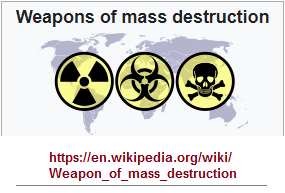 In fact, the idea of
"walking" has sometimes been replaced by extremely fast moving creatures whose separate body parts remain animated though they are
severed from the body. (Note that when speaking of "witch doctor", we do not typically use ideas such as magician doctor, warlock
doctor, sorceress doctor, sorcerer doctor; mainly because these professions do not engage in acts focused on attempted healing.) In addition,
when speaking of mutations, it may not be long before we see the three characters begin to share their qualitative traits with one another to
produce a vampire werewolf, or zombified werewolf, or some combination like a 3-in-1 creature sphinx or 3-in-1 creature griffin.... like the
three-patterned WMD (weapons of mass destruction) ensemble of Biological-Chemical-Nuclear/Radiological.
In fact, the idea of
"walking" has sometimes been replaced by extremely fast moving creatures whose separate body parts remain animated though they are
severed from the body. (Note that when speaking of "witch doctor", we do not typically use ideas such as magician doctor, warlock
doctor, sorceress doctor, sorcerer doctor; mainly because these professions do not engage in acts focused on attempted healing.) In addition,
when speaking of mutations, it may not be long before we see the three characters begin to share their qualitative traits with one another to
produce a vampire werewolf, or zombified werewolf, or some combination like a 3-in-1 creature sphinx or 3-in-1 creature griffin.... like the
three-patterned WMD (weapons of mass destruction) ensemble of Biological-Chemical-Nuclear/Radiological.
When we compile a list of analogy or metaphor, each of us may resort to the usage of a personalized expression of a similar cognitive theme, though these expressions will necessarily take on the character profiles of those using this respective channel of expression. Some expressions will appear to be more crude than others, just as others might well be interpreted to be expressions of greater refinement; just as we see in the characterizations assigned to the three typical lower-middle- upper social classes. A similar cognitive model in the (so to speak) hands of an illiterate, semi-illiterate or fully literate person will likely be different. For example, the three (or more) eating utensils used in a formal table setting by the upper class, will necessarily take on the expressions typified for the ability of the other classes to make use of, whether due to availability or desirability. Whereby a poor person would question the practical necessity of using differently styled spoons, forks and knives, a wealthy person's extravagance may deem it a proper valuation and validation to accept elaborations.
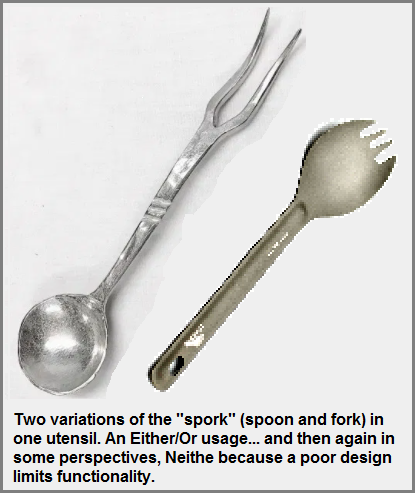
Whereas some individuals in the middle and lower classes may want to mimic the behavior of those in the upper class in an effort to express an indulged affectation that they are similarly disposed... at least by an attempted assertion, those who want to express a distinction may nonetheless exercise a similarity of cognitive activity in a truncated manner. Take for example the combining of the fork and spoon to create what some call a "spork", as opposed to the word "froon". In other words, they will use a spoon or fork to act as a multiple instrument. If we were to the same with knife and fork or knife and spoon or better still, all three instruments in one ensemble, different names would be created to be emblematic of the concretions (combinations) being derived. Likewise, in years past, the poor would use a knife as a substitute fork and spoon because they could not afford one. One would have to be quite adept at using a knife to eat a bowl of peas unless they resort to using the knife as a type of shovel while their mouth was held open near or at the edge of a cup or bowl. Nonetheless, the underlying cognitive intent is symbolically expressed in the manner that is possible. In other words, symbolic variations can occur, but since they occur in a limited setting, the variations are easily understood as be an alternative, which is not always the case for themes which are displaced in time and application. Their original use may no longer be how something is applied, but it nonetheless has merit of being due to a point of origination for the purpose of identifying it as part of a lineage. The same is true for biological quadrants... thought the mind may not be restricted to usage and development by originating forms... unless they are in certain instances, just as some ideas are used by those in authority to claim ownership and jurisdiction, such as the idea of a God and the notions of morality and peace— which different religions try to enforce their belief as the primary repository of truthfulness.
This same characteristic takes place in the biological realm in that growth and development are altered according to environmental conditions, but the underling imperative to reach a particularized goal of expression, is nonetheless asserted. Mutated forms arise as a result. Similarly, the idea of Zombies, Werewolves and Vampires are expressed mutations of an underlying cognitive model that appears to be constrained due to environmental pressures undergoing an incremental deterioration that humans (and all of biology) must adapt to, and generate what may be called "rationalizations" in an effort to deal with the dwindling rate of resources needed for growth and development. If you subject someone to conditions which are viewed as deprivations, their development, their health, their mind suffers the consequences. These consequences are abbreviations, distortions, over-lappings, and at time, wholly absent. Hence, a person's potential is being limited due to a constraint, a conservation caused by incremental deteriorations of the Earth's rotation rate, burnout of the Sun, and a receding Moon. Claiming that deteriorations are negligible and take place over a long period of time, is an incorrect perspective. It is one which aligns the life spans of humans with geological changes, and not actual biological ones. In other words, the life span of humans can not accurately be equated with the life spans of geological processes. It is of more value to describe the human life span akin to the fruit (vinegar) fly whose life span is such it is a useful tool to map out genetic variations due to altered environmental conditions. However, instead of being able to see changes in the physical development of humans to recognize how its biology is being affected, a means by which changes are affecting mental behavior is needed to span centuries.
The idea of a "standard cognitive model" lays the ground work for acknowledging the presence of a commonality spanning time and culture, when we adopt an evaluation which does not lend itself to enculterated valuations attesting to egocentricities sometimes called Nationalism, race, gender, occupation, etc... For example, why is it that Zombies, Werewolves and Vampires are said to have originated in Indo-European dominated territories? Is such a "Threes" theme an extension of the "tripartite" formula outlined by Georges Dumezil, or is his idea a crude representation of a cognitive formula using culture to define a pattern that exhibits itself in Asian and African commonalities as well? His biases do not need to be ours. No less,let us not overlook that the very ancient cultures of Asia may have used a cognitive profile which is not an exception, but a precursor that is changed when subjected to different global locations. We do not actually know how to rate transitional developmental cognitive themes, and are often inclined to think of that being exhibited in our respective culture as some sort of definitive majesty that others fail to evolve into. Yet, if the cognitive profile of all humans is the result of mutated variants, then the task to unravel the initial "code" by which the human mind uses, needs to be established in order to better plot the changes for the better, or the worse.
Attaching the notions of "Phylogeny" (history of species) and "Ontogeny" (history of individual) to the three characters symbolizing a recurring cognitive formula, it should be reviewed that when a cognitive scientist typically discusses the cognitive development of humans, they do so by providing references to an individual's mental development from the womb (or cradle) and death (or grave). In other words, cognitive psychology is foremost concerned with the mental development of an individual as well as particularized concerns of an individual's well-being, and not the cognitive development of the species throughout its history. At present, cognitive psychology does not have the mental framework for conceptualizing such an effort of analyses, because it does not pursue the understanding of cognition as it develops from basic constructs involving areas of research such as biochemistry and genetics. Current research does not openly grapple with the considerations that patterns found in very early developmental stages of biological constructs may have played a role in fashioning a trail along which the human brain traverses, as indicated by a similarity of patterning found in behavior (language, artistic/scientific/religious, etc...).
A man by the name of Ernst Haeckel created an ideological representation of embryonic stages of development from different life forms and noted similarities. His observations led him to suggest that these ontogenetic (early genetic) stages "recapitualted" (reflected, repeated) themselves in the overall development of a species as it evolved over the centuries. His three-part expression was "Ontogeny Recapitulates Phylogeny" and adopted by many as an accurate assessment of development, is often referred to as the Wikipedia: Recapitulation Theory and adopted by early cognitive scientists with varying themes: Wikipedia: Cognitive development. Clearly, however, vertebrate embryos do resemble each other in certain as the illustration describes, and can likewise be descriptively used to propose an analogical derivation found in cognitive development, separate from the typical meanings being articulated by current interpretations attempting to discuss ontogenetic and phylogenetic dimensions of mind/brain development:
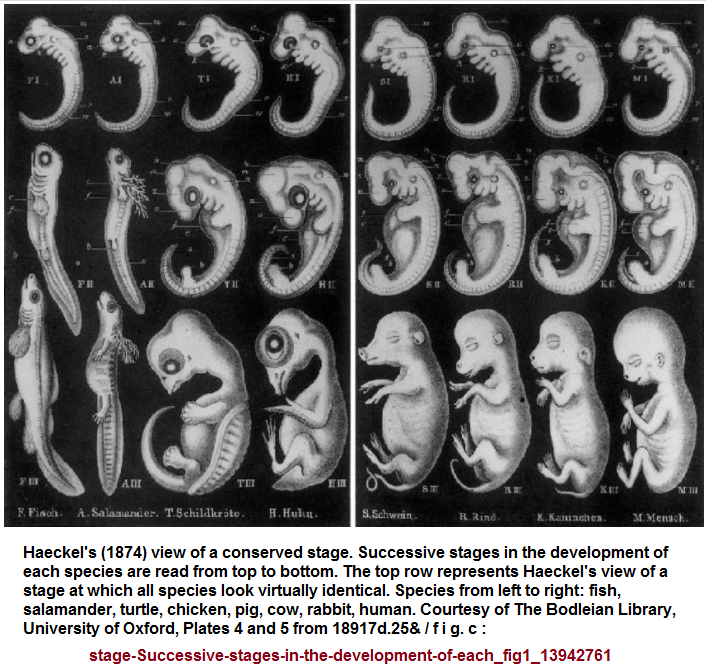
However, with respect to Haeckel's recapitulation idea, later studies came to recognize that it was felt to be better stated as "Embryonic ontogeny recapitulates Embryonic phylogeny"... at least to some degree. In other words, the overall or Phylogenetic development of the embryo was repeated in Embryonic development and did not capture the developmental scenario of the species... such as when viewing all the vertebrates as a species and not variants of the different animal forms with vertebrae. While embryonic expressions of development repeated themselves, later developmental themes appeared to not do so. Many of the same considerations taking place in reference to biological development are being applied to cognitive development. Such that some themes repeat themselves while other themes of cognitive expression appear to not do so. Variations of developmental themes can be seen as different symbols of cognitive expression which creates a very "busy" (distracting) portrait causing interpretation to be more complex. All because we are not using simple symbols of identification and instead use labels which are prone to alterations claimed as a speciality item over which a particular researcher claims dominion whose territory is marked out by movable mile markers.
Since we are relying on numbers to advance the rationale for assigning similarities, the so-called natural numbers alignment (1,2,3...) can be used in an effort to deduce recurrences. Since there are similar patterns found between behavior/ideas/language and those seen on the atomic particle and genetic levels, we can initially consider that the early patterns seen on basic (microscopic) natural activities plays a part in influencing later (macroscopic) expressions. Necessarily so, allowances must be made for complexities (overlaps and inter-minglings), whereby multiplicities can incline one to think they are seeing something wholly different, instead of compounded exaggerations that may or may not rely on multiple formulas of design.
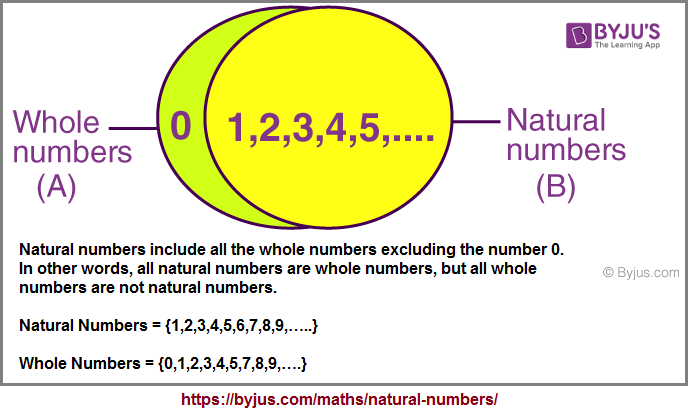
Let us take a simple example of a behavior which appears to be an expression of cognitive development, that is used everyday... or is at least known by millions in given circumstances involving the usage of a knife, fork and spoon... (either/or). The usage of chopsticks and ones hands does not preclude the absence of such utensils since they may be in attendance while cooking or food preparation (such as butchering and mixing). Additionally, we should consider that while the use of two chopsticks may well suggest a cognitive limitation at the "2", we need to include the appearance for using three sticks of incense for prayer. However, in regards to the use of two chopsticks with two fingers and one thumb, (while making a query on the internet, it is often encountered that only two fingers are mentioned), we see another example of a cognitive limit at the "2" stage of enumeration being expressed in what are called "Trigrams" of the I-ching, or I Ching Hexagrams. Alas, for those having an interest in such configurations, they overlook the presence of a cognitive "2" limit in that only single and double lines are used but configured into groups of three. Bigrams are actually Trigrams. An actual trigram configuration would have expressions of three lines, whereas the cognitive limit of "2" is compounded to give an artificialization. (I am the anonymous contributor of this definition.) It is like a primitive's attempt to look beyond their cognitive limit, but can only describe a step beyond using the familiar tools of two lines which are "reduplicated" much in the manner of a babbling infant. The so-called Trigrams consist of one and two-line variations arranged in three groups, creating an artificial cognitive gain beyond the "2". Much like a binary computer code that adopts a 3-part boolean structure, this is the result. It is not an actual adventure into a ternary (trinary) formula.
With regards to the presence of a single stick, one might well offer to suggest the usage of a pen or pencil typically held with three fingers... unless one prefers to look into a deeper past for the development of the "one" in such items as spears, swords, arrows knives, masts of ships and later guns and rifles. Though some readers might prefer the insistence of viewing linear objects as metaphorical phallic (penis) references, the familiarity with the number "1" can not be disputed too easily.
Symbolically, the knife looks like the number 1. However, one might suggest that the usage of chopsticks is the expression of an early cognitive limit clearly exercised in the duality of the yin/yang philosophy. No less, the refusal to move beyond the usage of the fingers to eat with, when eating utensils are available, or an insistence of eating particular items or items at a given time and/or place (such as from a road-side food vendor) which gives one an excuse not to use utensils, may also suggest the underlying cognitive activity is governed by a simplicity. While the usage of chopsticks does display the adoption of a symbolic representation of two-fingered eating, there does not seem to be a cultural interest in adopting a three-chopstick model of behavior to indicate an underlying desire to develop a form of cognition exceeding the dominant cultural imperative of relying on "two".
(Just a thought: Early spoons may well have been seashells used to scrape larger proportions, as a symbolic extension of the hand or hand substitute.)
The fork, more often in an ancient setting, revealed a "forked" two-pronged implement. The spoon is the third cognitive assignment related to the "much" or "many" quantity of early counting systems where it is thought there existed only three number words. In their own language equivalent way, the development of a knowledge of enumeration involved a single word for "one", a single word for "two", and a single word which expressed "three" or more. Later cognitive (mental) developments of enumeration schemes added to these three, but did not dispose of them as an ongoing presence. It appears that human cognition had stops and starts in its developing usage of numbers, to the extent that humans developed the idea of "one" whether singularity was acknowledged in any sense that we of today recognize it, and did not then proceed into the usage of "two". Hence, we witness the idea of a stopping point. Later on, the human mind went on to include the notion of "two", after which a stopping point was reached. The notion of "many" or "much" or "a lot" may well have been used in a primitive counting scheme, though it was not counted as a number itself. Likewise, while the usage of two number words may have included the notion of "many" to reference all quantities beyond two, the word may not necessarily be used to describe a particularized number arranged on a scale. It existed but was considered as a separate entity.
Indeed, one must even look at how a person describes the overall ensemble of these three items. For example, I count 1- 2- 3, when I express the group as knife- fork- spoon. If you express these three in a different arrangement from first to last... for example in a reverse order, you are thereby counting in a reverse order of 3- 2- 1.
When we look at a person standing at attention in the military, the silicide of the body expresses the number one. When "at-ease", a person's feet are further apart, thus enabling the silhouette of their body to represent a "forked" appearance, thus indicating a "two". that of slouching/sitting in a chair or on couch/sofa, the multiplicity of appendage movements ("flailings") can be deduced as the "many". A similar idea can be seen in the development of the computer code. Whereas the code was initially singular (pre-computer), the present code is binary, with an interest in the trinary or ternary formula being explored. While the idea of a more-than-three code may well be a part of someone's imagination, it's actual development does not have a workable rationale. The trinary code is looking towards quantum mechanics, while a quaternary code seems to be an oddity, since there is not yet seen any functionality of basic reality to use as a model for the architecture. While a four-code may come as a 3-to-1 formula, as do many so-called four expressions today, (including the usage of a comma in our numbering system between hundreds [3 zeroes] and thousands).
With respect to the usage of the Christian cross as a tool, instrument or weapon against Vampires (yet why not Zombies and Werewolves and other monsters? Does this suggest a limitation to the strength of the Cross and other religious symbols?); we should note that the usage of other symbols (Egyptian ankh, Buddhist/Nazi swastika, middle finger, etc., has no similar effect. The fact that it is the Christian cross and not some other religion's symbolism being used, describes the tale of vampires as being Christian-era European. The use of silver to subdue a werewolf, describes the age in which not only metallurgy had been developed, but that silver was viewed as something of importance. Zombiism has mutated from being a West Indies magical concoction, to a modernized expression of a disease due to a viral exposure. Which brings us to the consideration that there is a controlling agent behind the virus which creates a human army to kill humans, yet does not elaborate on "where to next" when all humans are gone. In other words, if any or all of the three characters are enabled to carry out the destruction of humanity, will they turn on each other? Will they develop into a type of 3-in-1 creature? For example, a Zombie werewolf, Zombie Vampire, or Vampire werewolf? Then again, by inverting the words, we might come up with a variety such as Werewolf zombie, Vampire zombie, and Werewolf vampire.
Date of Origination: Tuesday, 19th January 2021... 5:39 AM
Date of Initial Posting: Wednesday 27th January 2021... 10:59 AM
Updated Posting: Sunday 8th May 2025... 3:47 PM